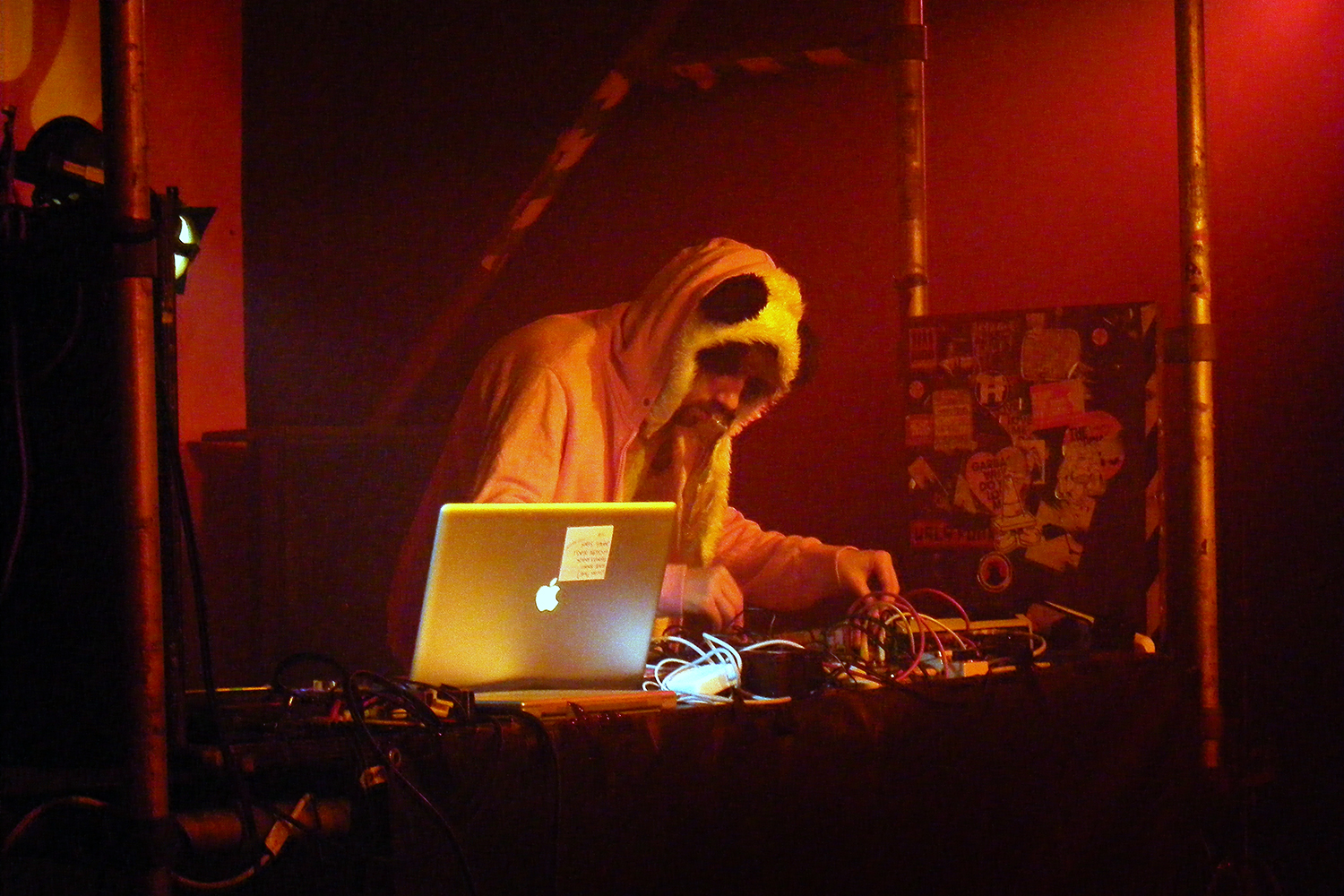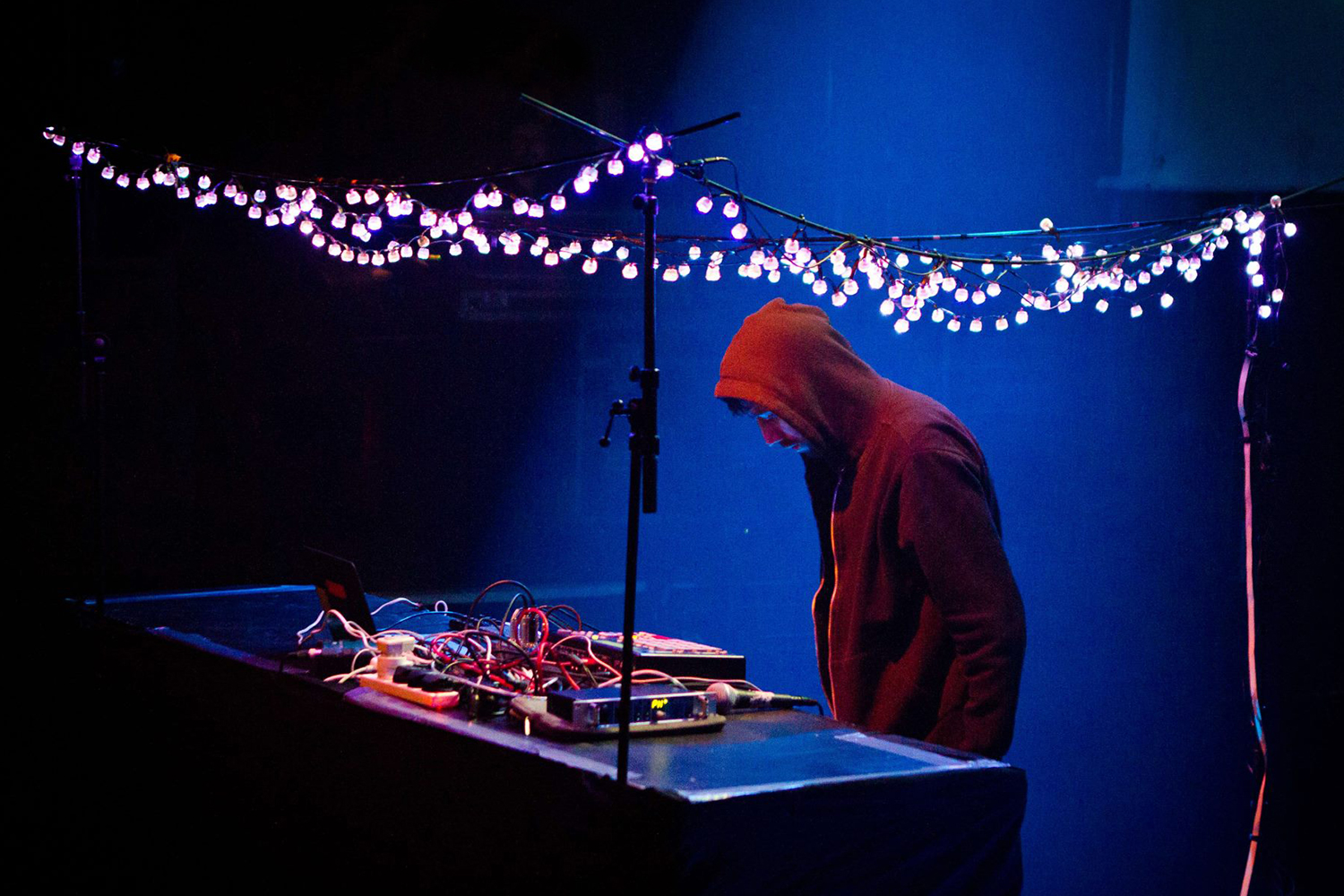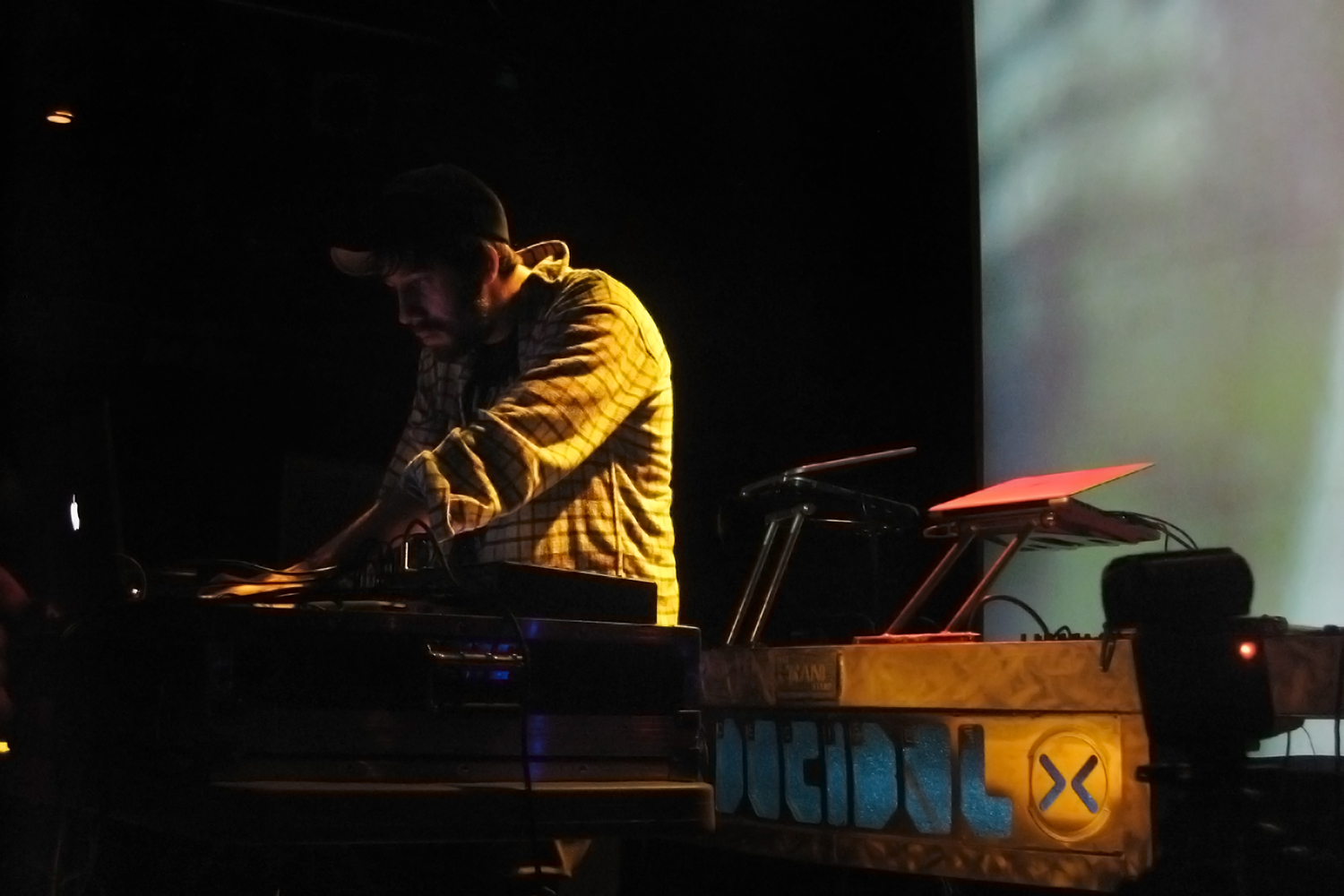
“I’m not worried about acoustics or getting the sound to be perfect. I just like making sound.”
I don’t know about you, but lately, I’ve been finding my sense of wanderlust on the rise, and it’s only been heightened now that we’re officially on the cusp of summertime. (Oh, you too, eh?) British electronic artist Gold Panda (a.k.a. Derwin Panda) can also relate to that feeling, but his own personal travelin’ jones has been on high alert ever since he got his first taste of Japanese culture. “I’ve just been interested in Japan for ages,” Gold Panda told Digital Trends. “After I saw Akira [the 1988 cyberpunk manga classic] at age 14, I was hooked on anything Japanese. I’ve lost count of how many times I’ve gone there at this point.”
In 2014, Derwin and photographer Laura Lewis embarked on a pair of pilgrimages to Japan with the thought of capturing a joint audio/visual travelogue to be released in book form, but those trips also fueled the creation of his new album Good Luck and Do Your Best, out today in various formats from City Slang. The album got its name from a loose translation of the Japanese phrase “ganbatte, kudasai,” which is what a taxi driver said to Derwin and Lewis after he dropped them off in Hiroshima.
And to borrow a line, Do Your Best floats like a butterfly and stings like a bee, from the percussive thrill ride of In My Car to the warbling distorted piano chords in Pink and Green to the scratchy guitar strums and shredded vocal sweeps on I Am Real Punk.
Gold Panda recently connected with Digital Trends via Skype from his homebase in England to discuss the fruits of his Japanese pilgrimages, why he still loves physical formats, and why he uses Spotify to “audition” new music.
Digital Trends: What kinds of things did you record on your recent Japanese “field missions”? What did you record them on?
Gold Panda: I went with a little Tascam recorder and a couple of mics, and I just recorded everything. I didn’t really know what I was recording until I listened back to it when I’d gotten home. I’d mainly recorded sounds of trains coming in and out of stations — those high-pitch brake sounds. I also recorded vending machines, air-conditioning units, and the buzzing and humming of the big telephone poles. There’s about seven hours’ worth of stuff, and I eventually want to do something with it all. I only used one field recording on the album, though.
Was it that doorbell I heard on Halyards?
(laughs) No, it’s on Metal Bird, right at the start — it’s the first sound you hear. It comes from a headphone jack that you get on a British Airways flight. They make really nice high-pitched sounds. And the lady was doing the safety announcement and everything, so it just got chopped up and put into a modular synth. And then it was put in time with the metronome, and that became Metal Bird.
That was the jumping-off point I needed to make more music. I mean, I did want to make more music, but I wasn’t thinking of making another album at that point. I was thinking of doing more abstract stuff, more field recordings — just making sound, really. And then it became another album, after a time.
What gear did you use to record the album?
I don’t feel I’m getting my money’s worth when I’m downloading music.
It was recorded on an [Akai] MPC2000XL [MIDI production center], which is 16-bit with, I guess, a 44.1 sampling rate. There’s something about that machine that sounds pretty good. And then it was taken to [producer] Luke Abbott’s house in Norwich [in England]. He’s a musician in his own right, and he’s really good at knowing what frequencies are obscuring other ones and other stuff I can’t do, because my studio is in the backroom of a house, just terribly set up. (chuckles)
My main thing is to have the right setup so I can make music. I’m not worried about acoustics, or getting the sound to be perfect — I’m more interested in making the song as quick as possible, and then sorting out the mix things later. Luke is really good for that, because he keeps after my sound. He’s got his old BBC mixing desk, and we put it through there. He’ll say things like he thinks it should be a “warm” record.
To me, Time Eater is a good example of a layered mix, where you hear those piano chords suspend a little longer than one might expect, and then you manipulate where they cut out and then cut back in.
Those are my choices, yes. Luke did some vague arrangement in Time Eater. I remember he took out the topline that repeated too much, and it just sounded clearer. I did take a lot of tracks to Luke, and some weren’t finished. Those were the ones that didn’t work out and aren’t on the album. Those that worked were finished, and those are the ones on the album because it is my album. (chuckles)
Well, it does have your name on it…
It’s easier to make the mix choices once the tracks are finished. You can sort out a lot of things in the mixdown, but you can’t sort out whether it’s a good track or not. If it’s crap, you can’t go, “Oh, well, when you go do the mix, we’re going to make it better, because we’ll make it sound good.” There’s no “finishing off” in the mix.
I do like that there’s a lot of surface noise on this record too. I love hearing that kind of stuff.
On the track called Unthank, the one that has that synth solo bit, it’s got a hissing sound — but that’s just the noise the keyboard makes anyway. And when you turn it up in the mix, it’s just there, and you can’t get rid of it. (chuckles) It’s good. It’s part of the sound.
I like it. Is that a real trumpet on Your Good Times Are Just Beginning, or is it a sample?
It’s a sample. I had to clear that one. I’ll leave that as a secret. If you can’t figure it out, you can find out what it is when you read through the album credits.
There’s also a track called I Am Real Punk that was made in probably 2003. After I’d been working for a while with Luke, he said, “I like your music, because it’s like punk. You’re just bashing around these pads, and the way you approach it, you just make music.” I said, “Aw, thanks, man. I have a track called I Am Real Punk, and the title is one of those bad Japanese translations about all these sounds.” It wasn’t a punk track at all — but maybe it is. Luke said, “That’s great,” and then he played a little synth on it, and it was done. We put it on the record, and it fit right in with the rest of the tracks.
It’s a nice break in the middle point of the record, right where Side 1 would end or Side 2 would start on an LP. I know you love records, so tell me why you think vinyl is still a cool medium.
Mainly because I’m a fan. All music I really enjoy, I want to own on vinyl, because I feel like I’ve got a memento of it. I’ve got something that I can engage with that’s nice.
If you’re buying old records, you’re buying something that’s already been loved and already been revered. It had some kind of emotional connection with someone. It’s got a little history, I think, and I really like that.
It’s nice to collect stuff. I’ve got a friend who pretty much has no belongings whatsoever except a laptop and clothes, and it feels really liberating. He can just go anywhere anytime, and he doesn’t have to worry about moving house. I can’t do that. I’ve tried. I just buy stuff back again! I’ve got books, and records, and CDs — I still buy CDs — and VHS tapes, and DVDs; I mean, anything.
I like having a tactile relationship with my music. You lose some of that in the digital realm.
I don’t know how it is for other people, but I don’t feel there’s any value in the digital. I don’t feel I’m getting my money’s worth when I’m downloading, if I’m buying digital tracks. I don’t feel like I’ve bought anything either.
If you’re buying old records, you’re buying something that’s already been loved and already been revered.
Obviously, the music is there, but I feel like I’m missing the artwork, which is important to see it, and hold it. When I’m buying records in shops, sometimes I’m buying them based just on the cover. It’s the same with books as well — especially photography, which has a large visual element. If I like the cover, I’m probably going to like what’s inside. Not always, but you take that chance. If you don’t like it, you can sell it.
If there’s an artist you like who comes out with something that has what you think is the “wrong” cover on it, it’s already got a vibe attached to that makes you feel uncomfortable about it before you even listen to it, right?
Sometimes you look at a cover and listen to the music and go, “I don’t understand this music,” but if you stick with it, it kind of makes sense. Sometimes it can really throw you: “This doesn’t go together!” But once you’ve lived with it for a year, you go, “I kind of like how this doesn’t go together. Now I love it. It really works.” That’s really rewarding, and I don’t think you get that with digital.
Speaking of digital, you’ve got a lot of listens on Spotify. How do you feel about that? After what we’ve just talked about, are you OK with people getting into your music in the digital world?
Yeah. You’ve got to start somewhere. People appreciate music and art in different ways, I guess. Like some people just engage with stuff on Instagram. They’ve never taken a photo with a “real” camera. The thought of taking photos and not uploading them would probably seem a little weird.
I use Spotify as well, but I’m not buying the files — I’m almost auditioning them. The stuff I listen to on Spotify the most are records I already own. And it’s good, because I can just download them on my phone, and listen to them there. And then I can get rid of them if I want to listen to something else. The stuff I do like, I end up buying. But the artist is getting, what — .0005 of a cent…?
We do have to work on that, yeah. It’s funny you use the word “auditioning” when it comes to pulling up tracks on Spotify, because I do it the same way. It’s like a test run. If I’m into it, I’m going to buy the physical version too.
Also what Spotify has done for me is, when I’m traveling, I’ve listened to albums that maybe I wasn’t keen on at first, but I live with them a bit in different situations, and then I’ve actually gotten to like them.
With music, if you like an artist and hear some new music and go, “I don’t really like that one,” what I’ve been doing lately is, I’ve been buying it anyway. I feel like that’s part of the journey. Maybe I don’t understand this bit of his or her career, but the next bit, I will.
I call that the Trout Mask Replica Effect. That classic 1969 Captain Beefheart album is the one everyone said I’d love, but I didn’t get it at first. It took maybe five to ten listens before I got it.
Yeah. I think that happens with Autechre records as well. You listen to it and you want to say it’s good because you don’t want people to think you’re stupid, but when you find out you do enjoy it, you go, “Oh yeah — this is great.”
Some music has a layer you have to get past, and then you get it. That’s kind of rewarding, because I’ve always been worried that my music is too simple, too pop, and just throwaway. Whereas with something more difficult, the reward comes later, and you find all these hidden bits.






